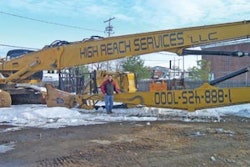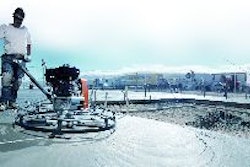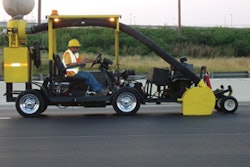
We've entered into a rare economic climate where operational inefficiency can no longer be over-come by superior marketing and selling.
In order to get your fair share of available work (survive?), your company must be extremely efficient in the field. The current construction market:
- Nearly everything is going to bid.
- Prices are rock bottom (often below apparent direct costs).
Margins are too slim and cash flow is too tight to be losing time in the field. There is no room for error.
We've been hesitant to focus our Best Practices Newsletters on production management as quite frankly, contractors are normally far too focused on field operations. However, these are not normal times.
NOW is the time to be OBSESSED with field performance.
Today, we are going to share with you the techniques we teach our clients to minimize their field costs. We teach them how to eliminate everything that slows down their crews, eliminates re-work, and manage their clients.
Before we introduce you to our FRC Multi-Tool for production management, we'd like to share a bit of history drawn from the manufacturing world. It is a much studied case about cost reduction and demonstrated the competitive advantage of continuous improvement - something foreign to contractors.
The TI Story
You probably are familiar with Texas Instruments (TI). It created and dominated the hand-held calculator market. TI set out to own the market. To do that, it needed to hit a relatively low price point that would discourage new competition. That price target was well below their initial manufacturing costs.
TI took a huge leap of faith that it would slice its manufacturing costs by over 90% simply by producing tens of thousands of calculators and applying the mass production lessons they learned along the way. It was playing the continuous improvement game and it worked like a dream.
Continuous Improvement
The continuous improvement game is where most contractors fail. Instead of lowering production costs as they grow, they tend to see them rise as they add crews and take on larger projects. Contractors rarely adopt systematic improvement methods for improving field performance. Hopefully, you're both different and better.
Contractors fall prey to the never-ending headaches created by designers and owners. They get brainwashed into believing they are powerless to change the way projects get built and thus powerless to get their crews working more productively. That conclusion can lead to a disastrous outcome.
You CAN greatly influence the way jobs go in and deploy processes that will keep your crews highly efficient. We're about to give you the tools that do just that.
Let's address the first issue by putting a nearly taboo subject on the table. Some generals are much better than others at keeping projects flowing smoothly. It is a fact of life in the construction industry.
Client-centric general contractors keep their subs sequenced and organized. They force decisions from owners and design teams before they hold up field progress. They listen to subcontractors, treat them with respect, and make sure everything they are owed is provided on time. Client-centric general contractors worry as much about completing the project quickly and professionally as they worry about saving a buck. Client-centric general contractors act more like a partner than a dictator.
How does that apply to you?
Sooner or later, you will find yourself working for one of the many (most?) generals who is not client-centric. Use the tools to help you force the general contractor, design team, or owner to make timely decisions and provide timely information.
Before you go off thinking that all of your problems are caused by outsiders, realize that most of the field inefficiencies we've witnessed were self-inflicted.
For example, one of my clients recently pulled his key foremen together and asked them to list the most common causes of lost time. Here was their list:
- Not getting material to job on time
- Not keeping crews together
- Unrealistic and unmanaged project schedules (by GC)
- Foreman not understanding the scope of work
- Waiting on others
- Job inventory and cleanliness
- Lack of daily planning
You shouldn't be surprised at the list. I wasn't. That's a typical list. So predictable in fact that is the list of problems we designed two of the four tools to prevent.
All in all, our clients deploy four tools to minimize the problems that contractors have traditionally considered unsolvable. Here are those four tools (the FRC Multi-Tool):
- The Crew Activity Plan
- Daily Huddles
- The Daily Log
- Cost-coded Timesheets
Each of the tools has been described in detail in a previous articles, so we're only going to briefly explain each herein. That said, this is the set of tools every contractor should be using to minimize field costs.
The Crew Activity Plan
The Crew Activity Plan combines a two week schedule with a list of manpower, material, equipment, and information needed meet that schedule. This is by far the most important of the tools.
The Crew Activity Plan forces the foreman to think ahead. It allows the foreman and project manager (PM) to aggressively chase down answers and client decisions before they interrupt work. The list of material, equipment, and man-power needs gives the PM the information he or she needs in order to arrange for those items in a timely manner and / or adjust the work plan if those items are going to be unavailable.
It arms the PM with the proof he needs to motivate the client to make a decision and designer to produce the needed documentation. By highlighting the potential impact of information delays, the liability for those delays switches from the contractor, who is often treated as guilty until proven innocent, to the design team or general contractor. It's truly amazing how much faster people respond when their defensive cover is destroyed ahead of time.
Daily Huddles
Let me share a story that illustrates the benefit of setting specific targets each and every day.
I was meeting with a client whose company framed new houses and light commercial buildings.
He was moaning that his crews moved nowhere near as fast now as they did when he was on site working hand-in-hand with them. I asked him whether he thought they were goofing off. He emphatically replied "No. My foremen push them pretty hard."
I asked him how he kept his crew moving when he was onsite. He explained that he would tell them things like "It's 8 AM. We're starting on the floor and have to finish it by 10 AM."
Then I asked "Do your foremen set similar targets for their crews?"
"No. I guess they should. Never thought about that before."
Have your foremen tell their crews EXACTLY how much work you expect them to get done that day. Give them specific targets such as putting down 100 yards of concrete or framing out the second floor.
Your foremen should do this every morning and review progress every afternoon. That way the foreman will have time to resolve anything that popped up before it becomes a major monkey wrench.
The Daily Log
Daily logs have been around construction sites for decades - and for good reason. They perform a valuable service as a written history of the project.
They capture valuable information that is otherwise quickly forgotten such as: weather interruptions, delays caused by other contractors, and work performed. Daily logs are a great place to document the quality problems left behind by the previous trade. They are also a great source for identifying improvement opportunities.
By reviewing a series of daily logs, both from the same job and from several jobs, a PM and/or operations manager can separate fact from fiction. As we've seen over and over, the mind tends to remember our pet peeves and ignore everything else. Daily logs offset that problem by showing us what issues are consistently slowing us down.
Cost-coded Timesheets
We explored this in our last article, but we'll touch on it again in case you missed that one.
In order to improve something, it must be measurable. If your timesheets don't track hours spent on specific activities, you will never know how large your improvement opportunities are nor where to find them. By tracking time lost to things such as waiting for materials or information, broken tools, rework, etcetera you will give yourself the benchmark you need to measure progress.
Okay, there's your set of four fairly simple techniques for improving field productivity (your FRC Multi-Tool). Adopted and used consistently, they will have a profound impact on your productivity, costs and competitiveness.

















